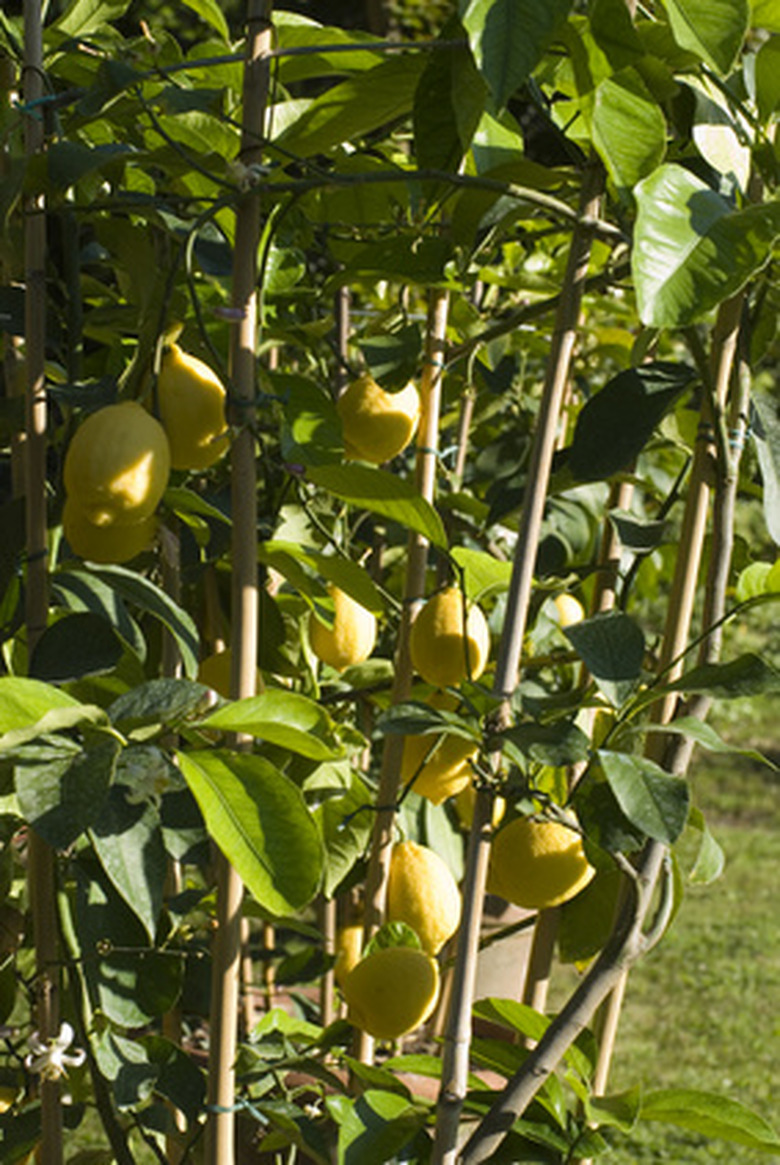How To Espalier Citrus Trees
Things Needed
- Drill gun
- Hammer
- Vacuum cleaner
- Sealant or caulk
- Masonry shields
- 2-inch eye hooks
- Galvanized wire
- Pliers
- Turnbuckles
If you love citrus fruit but have limited space in your yard, you might consider training your tree into an espalier. When you create an espalier, you train your plant to grow in a "flat plane," according to Sunset magazine's website. Another benefit of making your citrus tree into an espalier is that it will be more productive than trees that grow in the more common globe configuration. Espaliered trees work well in front of a wall, fence or your house. You can choose from several different espalier designs, all of which are effective in keeping your citrus tree contained and productive.
How to Build an Espalier for Citrus Trees
Step 1
Drill holes in brick or masonry walls that are the correct size for your masonry shields. Make holes 2 feet apart in rows 1 foot apart, from 1 foot above ground level to about 8 feet up the side of the wall or building. If you're building your espalier on a wooden surface, you can skip this step and screw the eye hooks directly into it. Then clean any dust from your holes with a vacuum cleaner nozzle.
- If you love citrus fruit but have limited space in your yard, you might consider training your tree into an espalier.
Step 2
Squeeze a sealant or caulk into the holes and then tap the masonry shields into the holes with a hammer, forcing them into the holes until they are recessed a bit. Skip this step if you're working with a wooden surface.
Step 3
Insert one eye hook into each masonry shield and tighten securely. For wooden surfaces, screw eye hooks directly into the wood, but make sure you're inserting them into solid wood, plywood or studs for the best support.
Step 4
Loop the galvanized wire through the eye hooks. Wrap the end of the wire around the first eye hook twice and then loop the end of the wire around the long piece of wire several times with your pliers.
Step 5
Insert turnbuckles half way between your eye hooks. Then tighten them to make the wire taut.
- Squeeze a sealant or caulk into the holes and then tap the masonry shields into the holes with a hammer, forcing them into the holes until they are recessed a bit.
- For wooden surfaces, screw eye hooks directly into the wood, but make sure you're inserting them into solid wood, plywood or studs for the best support.
Step 6
Plant your citrus tree as close to the wall and your wires as possible.
Step 7
Trim your espaliered citrus tree two or three times each year to keep new growth looking tidy and to train your tree to grow where you want it.
Tip
Check the tightness of your wire once or twice a year and tighten your turnbuckles if you find the wire has stretched. All citrus trees require soil with good drainage, so add compost and other organic materials to clay soil before you plant your tree. Grapefruit trees grow larger than most other citrus, so make your espalier support tall enough and wide enough for a large tree if you want to grow grapefruit. The Eureka lemon is recommended for espaliers, according to Four Winds Growers.
